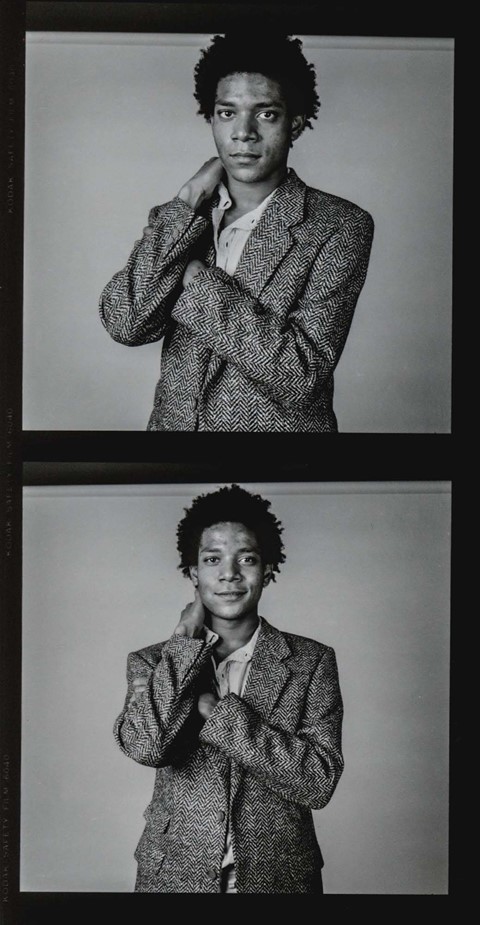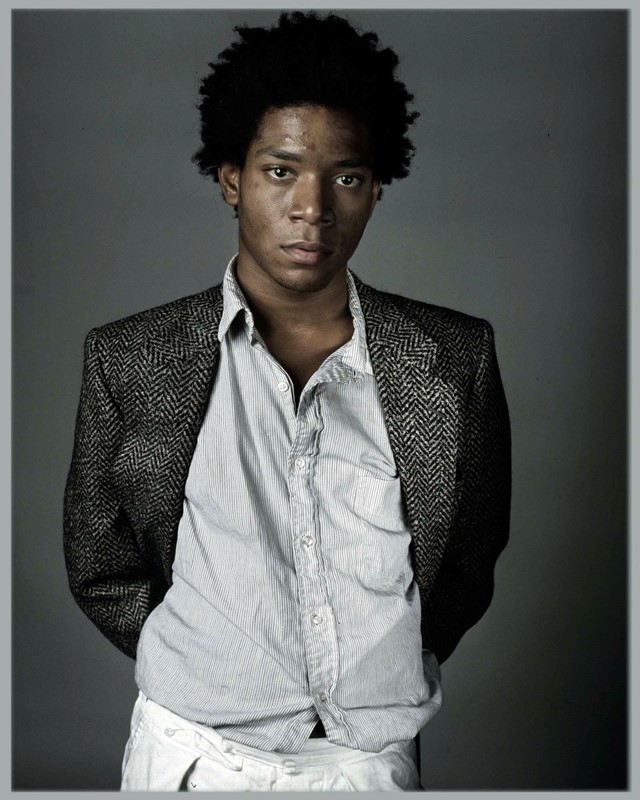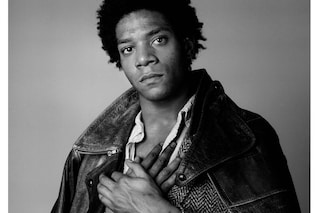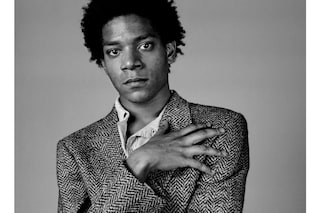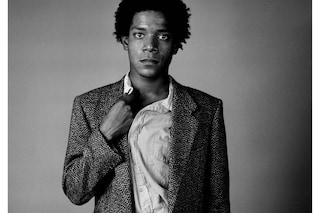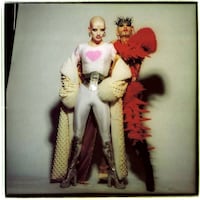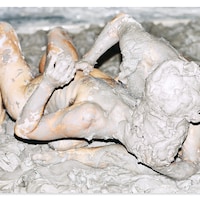During the major years of Basquiat’s career, photographer Richard Corman took an hour with the artist to create a moment of peace amongst the chaos
In June 1984, Jean-Michel Basquiat was flying high in his downtown studio at 57 Great Jones Street. He had just come off his first solo exhibition at Marry Boone and featured in the MoMA’s inaugural re-opening show, an international survey of the most important painters and sculptors of the moment.
Enter the then 30-year-old photographer Richard Corman, who had completed a two-year apprenticeship with Richard Avedon. On assignment for L’Uomo Vogue, Corman would spend an hour with Basquiat creating a series of incisive portraits of the artist as a young icon, just published in a new, limited edition book titled BASQUIAT: A PORTRAIT,
This was Corman’s first encounter with Basquiat, who started leasing the studio from Andy Warhol in 1983. “I hope it works out,” Warhol says in his diaries on August 26. “Jean Michel is trying to get on a regular painting schedule. If he doesn’t and he can‘t pay his rent it’ll be so hard to evict him. It’s always hard to get people out.”
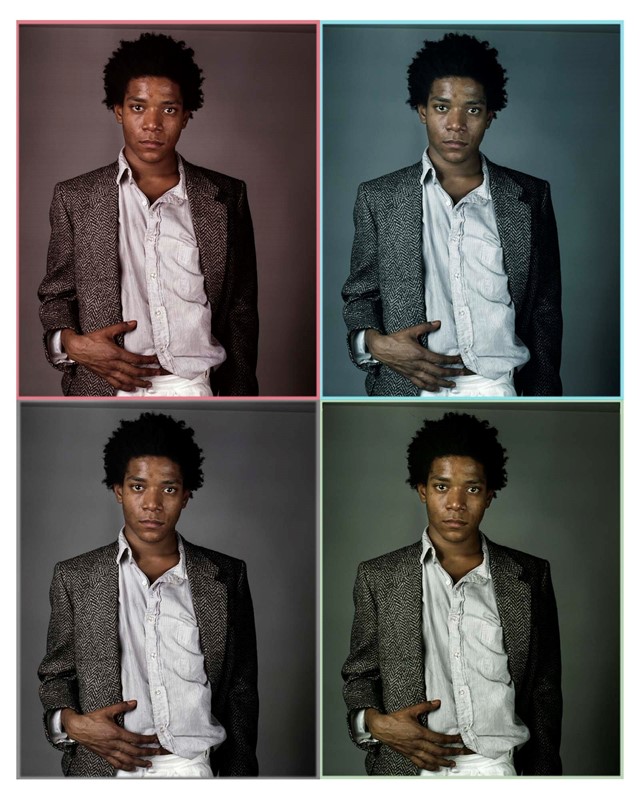
Spoken like a true Factory owner. Warhol purchased the two-story building in 1970, just as artists staked their claim Downtown, dusting off the Civil War era spot that was once a boxing club run by Paul Kelly, the founder of the notorious Five Points Gang.
As fate would have it, Basquiat’s new digs were across the street from the production office of Downtown 81, where he stayed during filming. Before moving into 57 Great Jones, Basquiat was essentially homeless. He stayed with different women until Warhol presented the opportunity of a lifetime.
Basquiat converted 57 Great Jones into a live-in studio and set to work, his bohemian spirit now rooted in the service of producing art. Warhol connected Basquiat with art dealers Bruno Bischofberger and Mary Boone. It was fortuitous timing – Julian Schnabel and Brice Marden had just left the gallery and Boone was distraught.
“Photographing Basquiat and other young artists for this editorial piece was fairly bold as L'Uomo was putting them on equal footing with traditional celebrities at that time” – Richard Corman
“I remember sitting in my office crying, and Jean-Michel comes into the gallery, which he loved to do. He loved to bicycle past and come in,” Boone told Interview in 2014. “And he saw that I was crying… So Jean-Michel puts his arm around me and says, ‘Don’t worry, Mary, I’m going to make you much more rich and famous than Julian ever would.’ Those were his exact words.”
His assurance was founded in faith and fact. His 1982 canvas “Untitled (Skull)” had sold for a record $19,000 at Christie’s spring 1984 auction of contemporary paintings. The painting had been purchased just one year before for $4,000, establishing the 23-year-old artist as a star at a time when few people of colour were recognised by the art world.
Basquiat’s ascendancy caught the eye of L’Uomo Vogue that same year, who saw in Corman a photographer who understood the portrait’s ability to capture, describe, and reveal. The previous year, Corman had photographed Madonna in and around her apartment in the East Village, just before she released her first album. Like Basquiat, who she had dated in 1982 and 1983, Madonna exuded sex, style, creativity, and rebellion.
“L'Uomo had a great cultural impact, as the writing, photography, and subject matter were innovative and somewhat radical,” Corman recalls. “Photographing Basquiat and other young artists for this editorial piece was fairly bold as L'Uomo was putting them on equal footing with traditional celebrities at that time.”
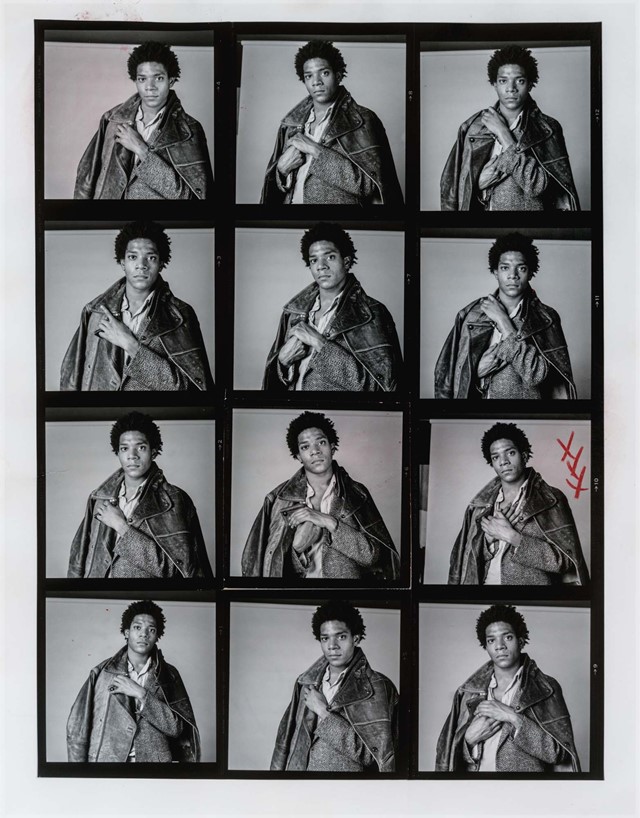
Corman describes Basquiat’s studio as “one of great creative confusion, where diversity, music, art, smoke, politics, and poetry engulfed his space. He was the inspiration behind it all as his murals were on the walls, floors, and any other substrate to be seen”.
Drawn to the immediacy of Basquiat’s presence, Corman honed in on his intensity by isolating the artist from his milieu. “My instinct was to place a four-foot wide grey backdrop behind him, removed from all the distractions, and allow some sense of privacy so that I could see the human spirit behind the art,” Corman says.
Once the spotlight was on him, Basquiat came alive, opening in front of Corman’s camera. “His demeanour seemed so complicated as he complied and participated, but there always seemed to be a bit of anger, sadness, vulnerability, and curiosity behind his eyes,” Corman says.
Over the course of their hour-long photo shoot, Basquiat drew Corman deeper into his world. “I had never seen anyone like him prior to this experience... so charismatic in the most serene and humble manner!” he says.
Perhaps this quiet moment alone with Corman gave Basquiat a moment of freedom from the demands of his world, one that would ultimately consume him by the age of 27, when he died of a heroin overdose inside his beloved Great Jones studio.
Basquiat ‘A Portrait’ is a limited edition publication of 500 books. Each book is signed and numbered by the photographer Richard Corman. Available to buy exclusively on Vero for £200 from here now
